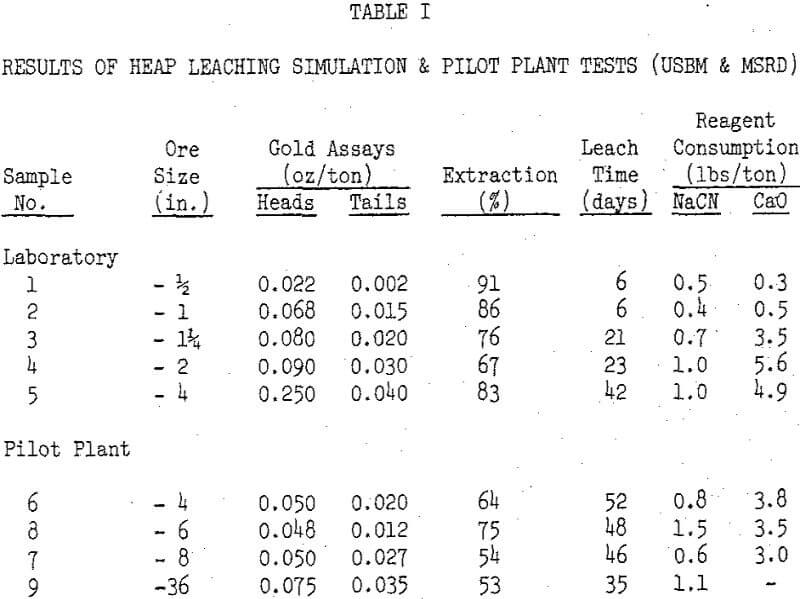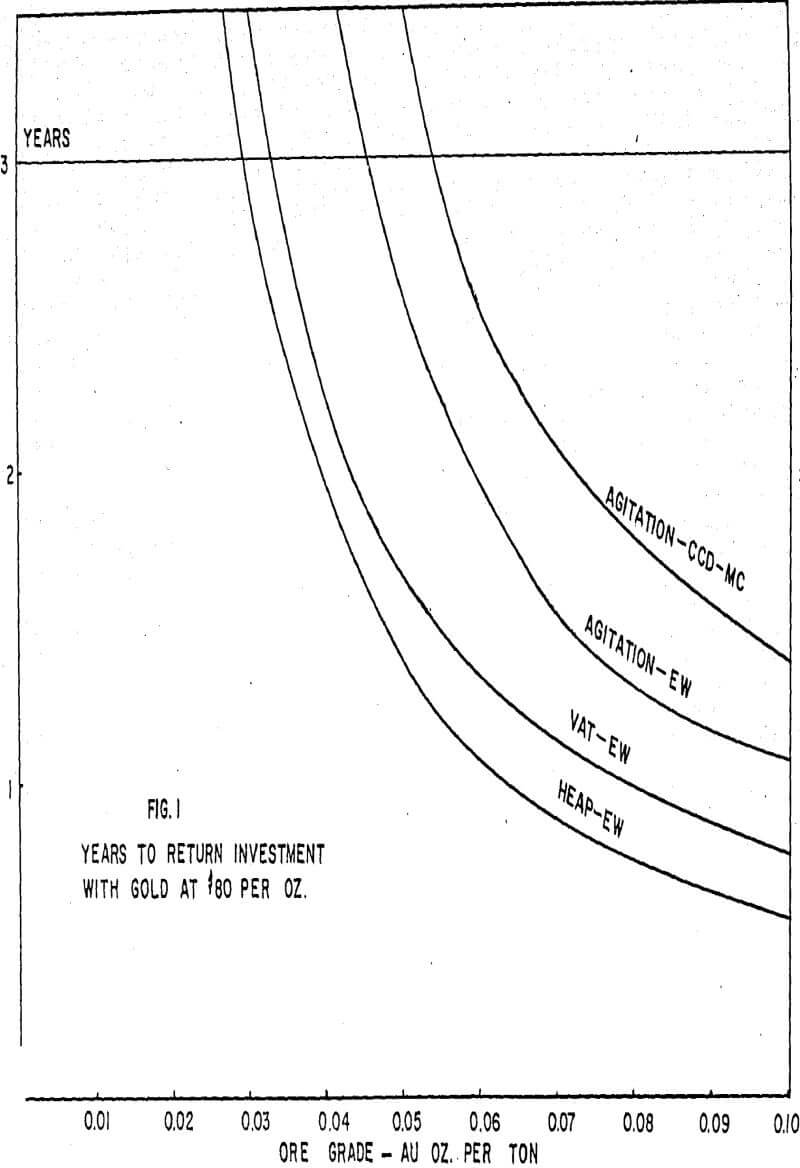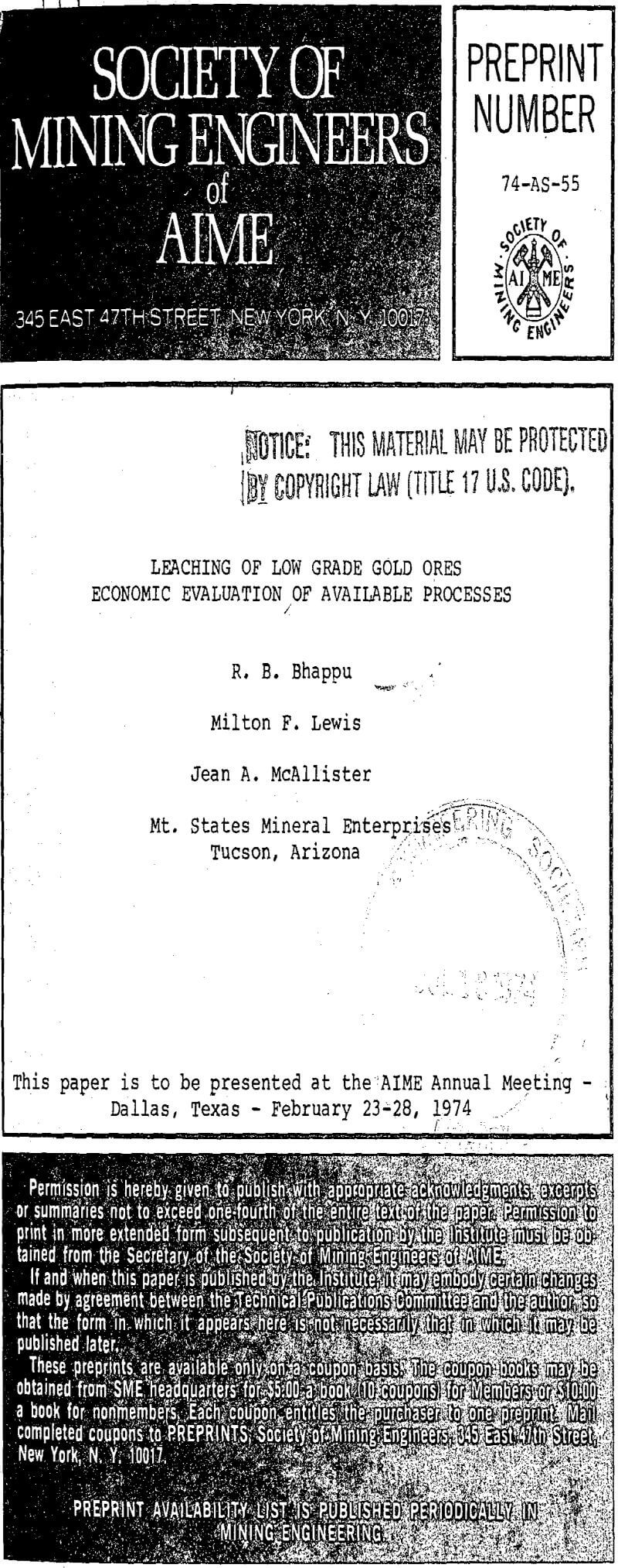The treatment methods applicable to comparatively higher grade ore averaging better than 0.2 ounce gold per ton and having a cutoff grade of about 0.07 ounce gold per ton, include gravity concentration, amalgamation, flotation, cyanidation or direct smelting. Such processes involve high capital investments as well as high operating costs. A conventional cyanidation plant used in processing lode gold ores usually includes crushing, fine grinding, and agitation leaching in cyanide solution.
In the heap leaching-carbon adsorption-electrowinning process, the mined ore, with or without coarse crushing, is piled into heaps on an impervious base (natural bed or artificially prepared pad). The dilute cyanide-lime solution, which selectively dissolves gold and silver, is then distributed over the surface of the heap, collected, treated in activated carbon columns, and recycled after adjusting the concentration of cyanide and lime. The leaching is continued over a period of several weeks or months to obtain optimum extraction.
For commercial operations, the impervious leaching pads can be made of asphalt or earth lined with clay so that over 90% of the leach solution is recovered, the only loss being due to evaporation. This is imperative since cyanide solutions are toxic and they also contain gold values. The size of ore may vary from about ½-inch to run-of-mine material. The depth of the heaps may range from about 10 to 50 feet with additional “lifts” added for further leaching. The strength of the leach solution may range from 0.05 to 0.1% sodium cyanide with a pH of about 10.5 adjusted with lime. The rate of solution application may vary from 5 to 25 gallons per square foot per 24 hours.
Another promising technique for extracting gold values from low grade ores consists of vat leaching in which finely crushed or deslimed ore is carefully bedded in vats (tanks) to assure permeability. The cyanide solution is applied to the vats by upward or downward percolation and flooding to dissolve the previous metal values over a period of several days. The gold bearing cyanide solution may be treated continuously with activated carbon to recover the precious metals as described above.


From the viewpoint of metallurgical efficiency, in general, the agitation (cyanidation) leach gives the highest extraction amounting to plus 90% within 24 hours, followed by vat leaching with an extraction of about 85% in a 3 to 6 day leaching cycle. The heap leaching on the other hand, is relatively slow with an extraction of about 60 to 70% in a 6 to 7 week leaching period on crushed ore. It is only through thorough laboratory and pilot plant testing and a detailed feasibility study that one could ascertain the optimum process for a given ore.


